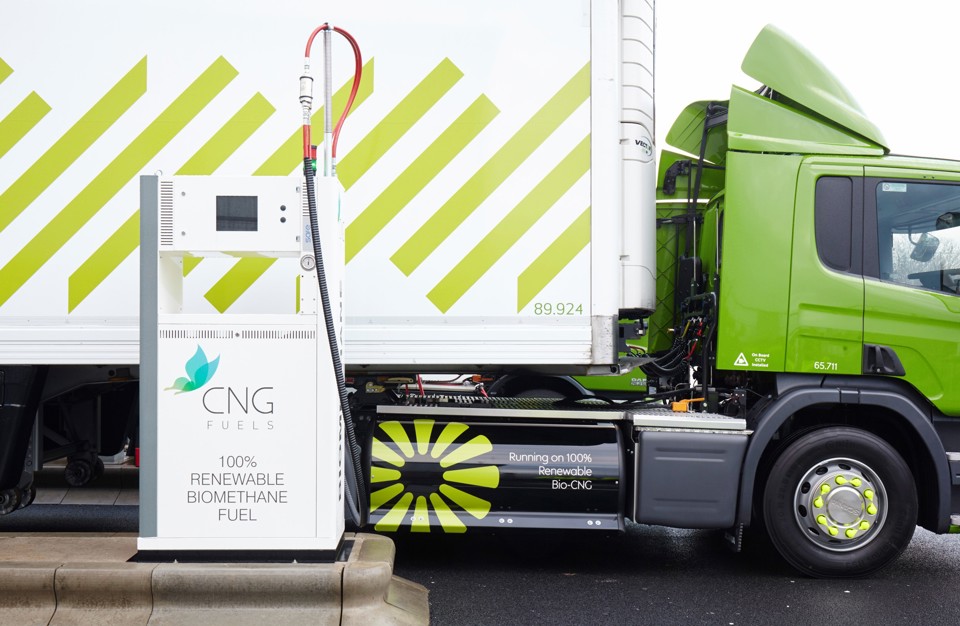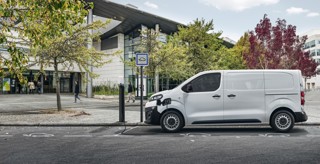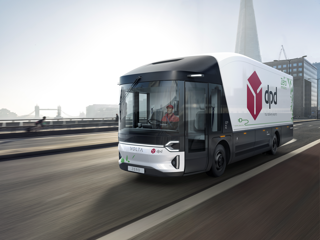The Government is being urged to develop a ‘masterplan’ that will enable the decarbonisation of transport, including vans and trucks.
The sale of new internal combustion engine (ICE) vans is due to be banned from 2040 alongside cars. But that could change, with the Department for Transport (DfT) currently consulting on bringing forward the ban from 2040 to 2035, or earlier, and including hybrid vehicles for the first time.
Government policy has focused on the electrification of car and van fleets, while the pathway for the decarbonisation of heavier vans and trucks remains unclear.
Graham Hoare, executive director of business transformation at Ford, said there will not be a “single solution” or a “silver bullet” to decarbonising commercial fleets, but the next 15 years would be “unparalleled” in the transformation of the industry.
“We’re very excited about the electrification pathway, but that will come in many different shapes and sizes; a range of solutions will be appropriate for our customers.”
A range of alternative fuel vehicles (AFVs) is being developed and beginning to be adopted by fleets, with electric, hydrogen, biomethane and hydrogenated vegetable oil (see page 66) among those being employed or considered by operators.
Hoare explained: “There isn’t one size that will fit all (applications); different classes of vehicle will move at different rates and a different application of electrification technology will be necessary as we move to that zero emissions objective.
“For heavier vehicles in the commercial vehicle world, we will see the implementation of hydrogen, where appropriate. But all of these need to be brought together and we need to define a masterplan.”
GOVERNMENT STRATEGY
The Road to Zero strategy published in July 2018 stated that the Government’s long-term goal was the development and deployment of zero-emission HGVs.
However, it acknowledged that the pathway to achieving this was not as clear as for cars and vans, which are subject to the current consultation.
The strategy also included a new industry-wide voluntary target for reducing HGV greenhouse gas emissions by 15% by 2025, from 2015 levels.
It was bolstered by a new EU Heavy Duty Vehicle (HDV) CO2 emission standards regulation, which came into effect in July 2019.
This established, for the first time, CO2 reduction targets for HDVs. The new regulation set binding CO2 emission reduction targets for HDV manufacturers of 15% by 2025 and 30% by 2030 (based on 2019 emission levels).
Manufacturers face fines for non-compliance.
In the Government’s Decarbonising Transport: Setting the Challenge report, published in March, HGV greenhouse gas (GHG) emissions are projected to fall by 26% from 2018 to 2050, despite a projected increase in HGV mileage of 7% over the same period.
Emission savings are driven by the new 2030 HDV CO2 regulations, it says, alongside baseline efficiency improvements driven by the market.
New van CO2 emission reductions regulations came into effect on January 1, 2020, setting targets out to 2030 which apply in the UK.
The regulation sets binding CO2 emission reduction targets for new vans of 15% by 2025 and 31% by 2030 (viewed against a 2021 baseline).
DIFFERENT CHALLENGES
Carlo Rodrigues, managing director of Renault Trucks UK and Ireland, said: “Some manufacturers are developing pure electric battery trucks, but others are focusing on hydrogen or other fuel sources. We do trucks to transport load, not to transport batteries.”
He explained: “On urban, last-mile deliveries, the weight of the batteries still allows us to provide good payload today and at a really competitive price. But, if you want to do a large truck, a semi-truck, then the battery technology is a challenge because it’s very heavy. Hydrogen is a possible solution.”
Renault’s pure battery electric truck, the Range D Wide ZE 26 tonne 6x2 rigid, arrived in the UK earlier this month. Its 93-mile range makes it most suitable for last-mile deliveries.
In its annual report to Parliament, the Committee on Climate Change recommends that the DfT organises trials of zero-emission HGVs within the next year, to establish which is the most suitable and cost-effective technology for the UK.
The report also calls for the Government to strengthen incentives for commercial fleets to buy more efficient and zero-carbon HGVs and include HGV recharging in Project Rapid plans.
Toby Poston, director of corporate affairs at the British Vehicle Rental and Leasing Association (BVRLA) says the zero-emission vehicle outlook varies considerably in the fleet sector dependent on the type of vehicle used and the business operating model.
“There needs to be a more segmented approach that considers what is realistic for all vehicle types,” Poston said. Suitable vehicle supply, infrastructure, range and cost of ownership is not there yet for all fleet users.
“The challenges faced by LCV and HGV operators are very different to those faced by car fleet operators, who are further along on the road to zero.”
FUEL CHOICES
Ford is employing a range of technologies in its vans, with plug-in hybrid and mild hybrid systems available and a fully electric Transit to be launched in 2021.
However, Hoare says the diesel engine will be here for the next decade. “It’s very practical, it’s got this duality, it’s got this breadth of capability. We’re searching for new capability in this space to make the commercial vehicle solution work.”
He thinks hydrogen will have a role to play, particularly in the heavier end of the market, which is where the manufacturer will focus its R&D efforts.
But he acknowledged that the pathway is not so clear for heavy commercial vehicles (CVs), with real change not coming until the end of the decade.
For many applications, battery electric vehicles (BEVs) are clearly the best fit, but the relatively higher mass and lower power density of current battery technology means that for vehicles which operate with the heaviest weights and longest ranges, storing the necessary power is not good news for vehicle capacity.
Amy Adams, vice president of fuel cell and hydrogen technologies at Cummins, said: “When we think about trains, heavy goods vehicles, and drayage trucks – vehicles with extreme power requirements and centralised operations hubs – FCEV (fuel cell electric vehicle) solutions are the most viable option.”
Adams explained: “We see the electrification of CVs as being reliant on technological maturity, economic reality, regulatory surety, and
infrastructural capacity.
“Only by developing the technology to the point where it’s ready to use, making it affordable enough to be economically viable, creating a policy environment where companies are confident in which solutions they should choose to roll out, and ensuring the built environment is ready to support the vehicles, will EVs move into the mainstream.”
The John Lewis Partnership has chosen biomethane as a low-carbon alternative to diesel as it gears-up to stop using fossil fuels across its entire 4,800-strong fleet by 2030.
The organisation is building a dedicated bio-methane gas filling station at its head office in Bracknell, Berkshire, and expects it to be up and running by December.
Initially serving approximately 120 Waitrose trucks, John Lewis wants its fleet of 600 HGVs to be switched to biomethane by 2028.
Since 2015, 85 of the Partnership’s heavy diesel vehicles have been replaced with biomethane trucks, and a further 143 will be bought and in operation by the end of 2020, making this the largest order of biomethane trucks in the UK.
General manager of central transport, Justin Laney, said: “It’s important we act now using available technology rather than wait for unproven solutions to appear.”























Login to comment
Comments
No comments have been made yet.